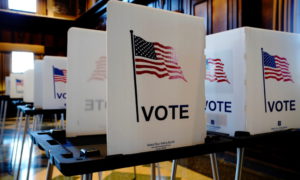Athletic endeavors take pains to make competition fair. Sports will differentiate between amateur and professional competitors. Boxing, wrestling, and Mixed Martial Arts competitions have weight class divisions. Some star baseball players have kept out of the MLB Hall of Fame because of their use of performance enhancements. Today there is controversy about transgender athlete Lia Thomas, but the issue of transgender athletes and sports fairness is not new.
Renée Richards was born Richard Raskind in 1934. In 1975 the 41-year-old underwent male-to-female gender reassignment surgery. As a child, she attended Horace Mann school, where she played baseball and football, and was a swimmer. Her best sport was tennis. She went on to be an outstanding tennis player and team captain at Yale. She went on to become a doctor of ophthalmology, specializing in the diagnosis and treatment of eye disorders.
In 1976 Richards competed in women’s tennis matches using an alias. After Richards won a women’s tennis tournament, a newspaper article titled ‘Women’s Winner Was a Man’ revealed Richards’ past. The U.S. Tennis Association demanded that Richards pass a chromosome-screening test in order to compete in women’s events. Richards sued the Association. Richards’s suit came before the New York State Supreme Court in 1977.
The Tennis Association argued that the Soviet Union would take unfair advantage in competitions unless the courts affirmed the USTA tests:
“We have reason to believe that there are as many as 10,000 [trans people] in the United States and many more female impersonators or imposters. The total number of such persons throughout the world is not known. Because of the millions of dollars of prize money available to competitors, because of nationalistic desires to excel in athletics, and because of world-wide experiments, especially in the iron curtain countries, to produce athletic stars by means undreamed of a few years ago, the USTA has been especially sensitive to its obligation to assure fairness of competition among the athletes competing in the U.S. Open, the leading international tennis tournament in the United States.”
Judge Alfred Ascione ruled that Richards could play in the women’s U.S. Open without taking a chromosome test.
“When an individual such as plaintiff, a successful physician, a husband and father, finds it necessary for his own mental sanity to undergo a sex reassignment, the unfounded fears and misconceptions of defendants must give way to the overwhelming medical evidence that this person is now female.”
In a 2019 Sport’s Illustrated article, Dr. Renee Richards offers her unique perspective on gender and sports:
“If I had played (as a female) in my 20s, I would have won Wimbledon.”
In the same article, Dr. Richards discussed transgender athletes competing without transitioning and her belief in the unfair competitive advantage,
“It is just biology. Men have 10 times the amount of testosterone that normal women have. Now you want to get rid of that testosterone? O.K., but then it is going to take a couple of years for that to equilibrate. And men still have a larger frame with a larger cardiac output, a larger lung capacity.”
In the same Sports Illustrated article, Dr Richards discusses her belief in the gender binary,
“I never would have been allowed to play on the women’s tour if I was a ‘trans’ something. But now it’s a third category. It’s not male-female. It’s gender fluidity. It’s something in between …. I am as bewildered by it as the average person. But look, things are different now. The world changes.”
Sources
https://web.mit.edu/jywang/www/cef/Bible/NIV/NIV_Bible/ECC+1.html
https://www.history.com/this-day-in-history/renee-richards-us-open-tennis-barred





















